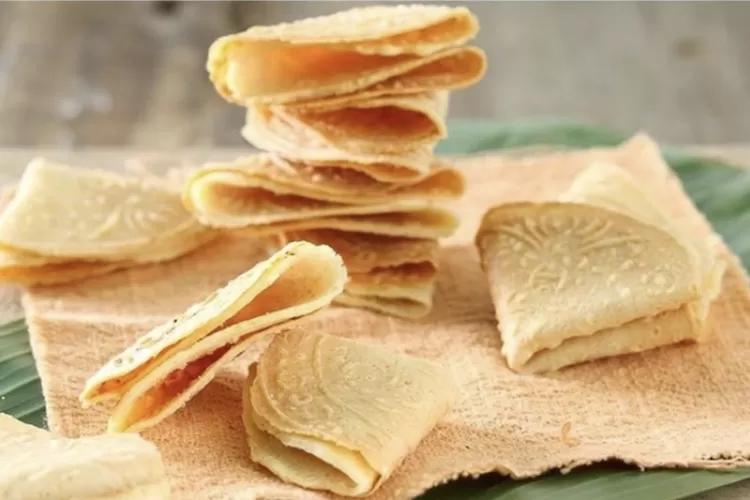Indonesian cuisine is deeply diverse, offering a treasure trove of delicious dishes reflecting the country's rich culture and heritage. Among the vast array of regional delicacies, Nasi Kapau holds a special place. Hailing from Bukittinggi, West Sumatra, Nasi Kapau is more than just a meal—it's a culinary tradition deeply rooted in the heart of Minangkabau culture.
Famous for its bold flavors, elaborate preparation, and unique presentation, Nasi Kapau has become an icon of Minangkabau cuisine. Often compared to the renowned Nasi Padang, Nasi Kapau boasts distinct characteristics that set it apart.
The Origins of Nasi Kapau
Nasi Kapau originates from Nagari Kapau, a small village near Bukittinggi in West Sumatra. It is the signature dish of the Kapau people, one of the many subcultures within the Minangkabau ethnic group. Over generations, this dish has evolved into a representation of their culinary mastery.
Unlike Nasi Padang, which is now widespread across Indonesia and typically served in restaurants, Nasi Kapau retains its essence in traditional local food stalls often referred to as Lapau Nasi Kapau. These stalls are commonly found in Bukittinggi, particularly at the famous Pasar Ateh (Upper Market). It is here that diners can enjoy an authentic Kapau dining experience, where food is prepared with love, steeped in tradition, and served with creativity.
What Sets Nasi Kapau Apart from Nasi Padang?
Both Nasi Kapau and Nasi Padang hail from West Sumatra, sharing flavorful rendang-style dishes and vibrant curries. However, they differ significantly in serving style, flavor profile, and standout dishes.
Nasi Padang is traditionally served in a "hidang" style, where an array of dishes is brought to the table, allowing diners to select what they wish to eat. On the other hand, Nasi Kapau is known for its personalized service, with the vendor standing behind a large serving counter. Using a long-handled spoon or ladle, they scoop dishes directly from traditional pots and trays, ensuring diners can pick exactly what they want.
When it comes to flavor, Nasi Kapau stands out with its bold, tangy taste, thanks to the generous use of ingredients like asam kandis (sour fruits) and tamarind, which add a zesty depth to its curries and side dishes.
What truly sets Nasi Kapau apart are its signature dishes, such as Gulai Tambusu, a unique delicacy of cow intestines stuffed with spiced egg and tofu. These distinct offerings elevate Nasi Kapau’s culinary identity and contribute to its distinct appeal among Indonesian food lovers.
A Closer Look at the Components of Nasi Kapau
At its heart, Nasi Kapau is a hearty dish anchored by steamed rice and surrounded by a rich assortment of side dishes and curries. This iconic meal showcases the vibrant culinary traditions of West Sumatra’s Kapau village, making it a unique experience for food lovers.
The foundation of the dish is warm, fluffy steamed rice, served fresh and soft. The rice plays an integral role as the base, soaking up the flavorful sauces and curries while acting as the perfect companion for the bold flavors that define Nasi Kapau.
One of the signature components of Nasi Kapau is Gulai Kapau, a creamy and aromatic curry prepared with young jackfruit, coconut milk, and a vibrant medley of spices. The tender jackfruit absorbs the bold aromas of turmeric, galangal, and chilies, producing a dish that masterfully balances creamy, spicy, and tangy notes. As the quintessential curry of this dish, Gulai Kapau embodies the essence of tradition and provides a delightful introduction to Kapau flavors.
Another standout is the iconic Gulai Tambusu, a traditional delicacy made from cow intestines stuffed with a mixture of spiced tofu and eggs. Cooked in a rich gulai-based curry, this dish offers a creamy, flavorful filling encased in a chewy outer layer. The unique combination of textures and rich depth of flavor makes Gulai Tambusu a key attraction for anyone enjoying Nasi Kapau.
Adding to the indulgent spread, beef batokok presents another must-try element. Thin slices of beef are tenderized (batokok, meaning "pounded" in Minang), marinated, grilled to perfection, and topped with a fiery sambal. The result is a dish that combines smoky, juicy flavors with the heat of the sambal, delivering a satisfying balance of spice and smokiness.
Of course, no Indonesian dish is complete without sambal, and Nasi Kapau is no exception. The sambal served alongside this meal is often fiery and zesty, made from a blend of fresh chilies, garlic, and lime juice. Its bright, spicy kick contrasts beautifully with the creamy curries and ties all the flavors of the meal together.
The Serving and Dining Experience
One of the most endearing aspects of Nasi Kapau is how it’s served. Vendors at traditional Nasi Kapau stalls arrange the dishes in an aesthetically pleasing display, often using earthen pots or metal trays. Customers choose their preferred dishes, and the vendor scoops them onto a plate of rice with practiced ease using a giant ladle.
The warmth of the vendor’s personalized service and the communal atmosphere of the food stall add to the experience, making every bite of Nasi Kapau feel like a connection to West Sumatra’s culture and hospitality.
Cultural Significance
Nasi Kapau is more than just a dish; it’s a cultural expression of the Minangkabau people. Food is an integral part of West Sumatran culture, as it brings people together and reflects their identity, values, and heritage. The spices, preparation techniques, and communal serving style of Nasi Kapau tell a story of togetherness and pride in tradition.
In Bukittinggi, Nasi Kapau is also a way to celebrate festive occasions and gatherings, bringing families and communities closer. For visitors, tasting Nasi Kapau is a way to immerse themselves in the flavors and traditions of Minangkabau culture.
For travelers curious about Indonesian cuisine, trying Nasi Kapau at Pasar Ateh, Bukittinggi is an unmissable part of a culinary journey through West Sumatra.










